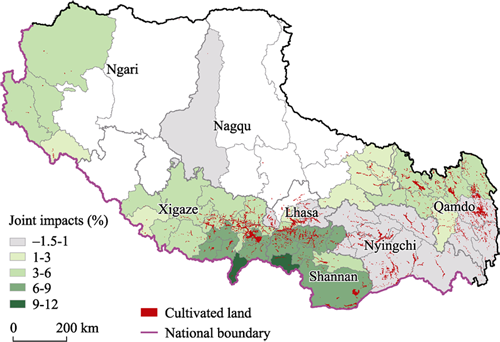Food supply has always been a major concern in Tibet’s development. As the Qinghai-Tibet Plateau is especially sensitive to climate change, clarifying the impact of climate change on the yield of cereal, a major crop in Tibet, is of great importance.
Prof. SHI Wenjiao’s team at the Institute of Geographic Sciences and Natural Resources Research (IGSNRR) of the Chinese Academy of Sciences (CAS) found that the climate change positively affects the cereal yields with a rise of 1.5% to 4.8%. This study was published in Journal of Geographical Sciences on January 6.
The researchers adopted datasets of meteorological stations and statistical yearbooks and used three types of statistical models to assess the impacts of climate change (minimum temperature, precipitation, growing degree days and solar radiation, etc.) on cereal yields in Tibet from 1993 to 2017 at the county, prefecture-level city and autonomous region scales.
DING Rui, the first author, a graduate student supervised by Prof. SHI, conducted the analysis. The results indicated that the impacts of climate change on cereal yields in Tibet were generally positive. Cereal yields in Tibet were more sensitive to temperature (minimum temperature and growing degree days) than precipitation and solar radiation. The greatest impacts of minimum temperature, precipitation, and growing degree days were in Lhasa, whereas the greatest impacts of solar radiation were in Shannan. The fixed-effects model was the most robust among the three models adopted.
The above findings can help implement more spatially targeted agricultural adaptations to cope with the impacts of climate change on the agro-ecosystem of the Tibetan Plateau.
Reference:
Ding Rui, Shi Wenjiao*, Contributions of climate change to cereal yields in Tibet, 1993–2017. Journal of Geographical Sciences, 2022, 32(1): 101-116.
 |
|
Figure: Distribution of the joint impacts of climate change on cereal yields in Tibet from 1993 to 2017 based on the fixed-effects model (Image by SHI Wenjiao) |
